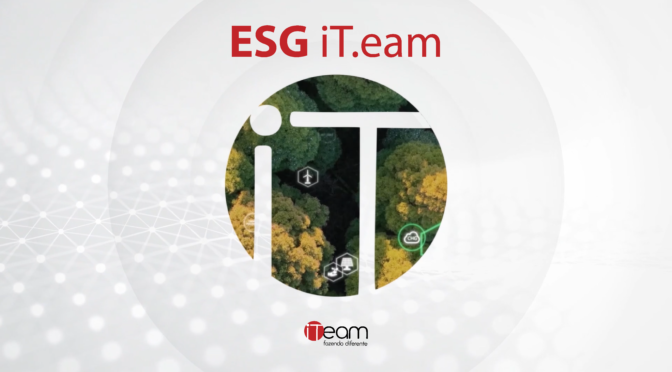How do you systematically define policies designed to guarantee the reduction of threats to a company's productive capacity? Risk management is the answer to this dilemma, since it also deals with reducing waste and finding new business opportunities.
In this post, we'll talk more about the concept, how to implement this methodology in your company and what role technology plays in this. In addition, we'll learn more about the link between risk management and data management within the business. Have a good read!
What is risk management?
It is a set of processes, applied throughout the company, to identify potential events. And what are these events? They are all situations that could affect the organization. In this way, they can be both risks and opportunities.
Since most companies rely on technology to optimize their processes, risk management is also directly related to this field. In this sense, companies must safeguard their data to keep their operations confidential and also to protect customer information.
There is a recurring error in the definition of the concept: risk management is not only about threats to the company, but also about the opportunities that arise for managers and which should not be missed. This can be exemplified by the acquisition of new software, the hiring of consultants or even the creation of contingency plans.
How important is risk management?
Risk management is essential for managers to be able to direct and control the countless uncertainties that are part of a company's operations. One of its main characteristics is the protection of the internal business environment, always seeking to add value to activities.
In addition, a risk management policy supports decision-making, since planning takes future scenarios into account. In this way, managers will be able to cope with uncertainties and deal with different scenarios.
Risk management also improves the company's ability to react to changes in the market. This is because it facilitates the agile identification of both opportunities and threats to the business. As if that weren't enough, it also ensures legal compliance, which helps the company fight fines and financial sanctions in general.
Finally, risk management aims to prevent losses, manage incidents and increase operational efficiency. With good employee awareness, the tendency is for reducing waste and combating faulty processes to become a fundamental part of the company's organizational culture.
What are the main risks in a company?
Now we'll show you some of the main threats that surround the corporate environment.
Data leakage
Companies store information about their customers, such as addresses, contact details and even payment details. It is therefore essential to adopt a security policy that protects this information.
In addition, the company's own data can be exposed through cyberattacks. One example is the dreaded ransomware, in which the hacker hijacks information and demands a ransom to return it. Therefore, a risk management policy must deal with this possibility.
Information security vulnerabilities
Cyber-attacks only occur when hackers discover vulnerabilities in the company's information security and exploit them. It is therefore essential that the company looks for ways to protect its corporate network and the integrity of its IT infrastructure.
This can be done by training employees. Another good idea is to combine this know-how with the help of experts in the field.
Misuse of customer data
Those employees who have direct access to customer data must have all the necessary knowledge to handle this information. Let's suppose that one of these employees is working from home - but using a computer that they share with other people.
Thus, even if the employee has no bad intentions, this behavior can make customer information available to unauthorized persons.
Misallocation of resources
Risk management is not limited exclusively to the use of technology, as it can also be defined as a reorganization of the company to deal with threats to the smooth running of internal processes.
Therefore, guidelines should consider ways of allocating resources more efficiently. This involves reducing waste and combating inactivity. To achieve this, adopting the business's Internet of Things is a good idea, as it provides asset tracking, enabling the manager to anticipate failures.
How to manage risks effectively?
Set appropriate targets
The entire risk management process is linked to measures to identify and combat threats to the company's production routines. The definition of appropriate targets, according to the particularities of the business, is also part of this management.
It is up to managers to adopt these guidelines in their processes. Some alignments can be made to facilitate the implementation of policies:
- effectively combating operational problems;
- preventing information hijacking and other virtual attacks;
- IT infrastructure maintenance;
- you can count on specialized consultancy and digital solutions tailored to your business profile.
Since most companies rely on the use of technology to carry out their processes, there is nothing better than protecting their systems. Therefore, the definition of risk management goals must also include protecting the corporate network and IT infrastructure.
Adopt good security practices
Investing in good risk management practices requires certain routines to be adopted in order to avoid critical failures. It is therefore essential to implement and disseminate good practices in the use of technology, for example, by raising awareness in all sectors.
Suppose a company wants to improve the protection of its digital data. In order to achieve this goal, it will be necessary to rely on the employees who have access to the company's computers and technologies. Optimizing this routine involves objective protection actions. We can highlight some of them:
- set access to the system via login and password;
- use of less obvious passwords, involving numbers and letters. This is especially important for employees who have wider access to the system;
- establishing criteria and levels of access in a well-considered manner. The challenge here is to guarantee protection, but without compromising the agility of processes;
- avoid unrestricted access to any type of content on the internet;
- giving presentations and lectures with the aim of making employees aware of good practices and informing them of the rules for maintaining the company's IT equipment;
- define reports and metrics that make it possible to evaluate risk management processes related to digital data.
It's important to remember that most attacks on a company's digital structure occur through direct interaction with a user in order to target the system. Thus, cyber-attacks, which put the company's internal data at risk, only happen because of the mistaken actions of people who have access to the system.
It is therefore essential that employees are properly trained to analyze and identify malicious pages and content on the internet. A good idea to ensure this is to rely on external technology consultants, who will be able to offer all the necessary training to make the use of the digital environment as safe as possible.
Protecting data
Data backup provides a safer environment for your company's digitized information. It also provides a more solid defense against software and hardware failures. If equipment is damaged, it's the cloud backup, for example, that will make it possible to properly safeguard crucial business information.
In addition, we should point out that the cloud environment needs to be properly protected by resources that guarantee the protection of information against tampering, copying or even data loss. This includes operations such as automated backups and access mapping for each file.
In this way, it will be possible to establish a list of users who have accessed certain files, as well as defining the date of that interaction, the time and even the source IP. A great idea is to combine backups with critical incident tracking capabilities using Big Data - a tool dedicated to analyzing patterns.
To ensure that the company's most important data is safeguarded, it's important to start with a proper assessment of which digital records should be prioritized when making copies. It's up to managers to check which information is crucial.
One tip is to check which information is accessed (and also modified) most frequently. Risk management should therefore focus on this data, which is essential for the company's operations.
Saving using devices such as USB sticks or external hard disks should only be used as a last resort, as they can easily be lost. Technologies such as cloud storage are more practical and safer when it comes to risk management of digitalized company information.
Carrying out inventories
It's a good idea to use inventories to map the assets that make up the company's infrastructure. In this report, it's important to include IoT devices, such as the software and hardware that the company uses on a daily basis. This step will facilitate risk management and asset control.
With the inventory, managers will be better informed about the need for infrastructure upgrades and maintenance. One example of an improvement is the ability to closely monitor the useful life of assets - and avoid failures and downtime in operations.
Monitoring the IT infrastructure
As we've seen so far, a risk management policy necessarily involves information security. After all, most companies have their own IT equipment and corporate network. It is therefore important to monitor systems closely.
With this monitoring, the institution will be able to more accurately map the gaps in the business's digital security and strictly adhere to an appropriate risk management approach. To carry out this monitoring optimally, companies can hire specialized consultants, which we'll talk about later in the article.
What risk management mistakes should be avoided?
What often goes wrong with a risk management policy? Let's find out.
Failure to establish information security policies
It is necessary to adopt good measures to prevent infiltration, as well as to train and make employees aware of the safest ways to use equipment. This last piece of advice applies to both the IT infrastructure and the company's assets in general.
Neglecting the GDPR
The General Data Protection Law is already in force and provides for heavy sanctions for companies that fail to comply with its rules. That's why it's essential to have a policy dedicated to the subject, not least as a way of protecting customers' private data.
Neglecting the LGPD can result in two extremely damaging events for the company: financial penalties and information leaks.
Failing to carry out predictive maintenance
Predictive maintenance is the type of maintenance that monitors the condition of an asset. It is essential for ensuring that production line equipment is in good condition - and it also increases the useful life of these parts.
Risk management involves monitoring the company's assets, since this work raises the level of the organization's infrastructure, increasing overall productivity, and also guarantees a safer environment for employees.
Neglecting cloud security
Cloud computing has quickly established itself as one of the main technologies within companies in different segments. After all, it makes it possible to share files, facilitate remote access and store information without the need for physical devices.
However, many managers end up dispensing with additional layers of protection and security in the cloud, such as permission hierarchies, advanced encryption and even the implementation of a Security Operations Center (SOC), with environment monitoring based on Artificial Intelligence.
What are the main ways of implementing risk management?
Now we will learn about the functions that should not be neglected for an efficient risk management policy.
Asset tracking
Tracking assets brings together the best of both worlds: the possibility of extending useful life and anticipating failures. Therefore, seeking out specialized partners to implement this agenda is essential.
Cybersecurity
Your company must have solid defenses against hacker invasions and also add safe practices when handling data - which can be done through internal training with employees.
In addition, it is essential to adopt technological solutions that are frequently updated and offer effective protection against viruses and data hijacking attempts.
Compliance
A compliance policy can be defined as a set of measures designed to comply with laws and ethical standards within a company. In this way, good practices become routine and effective control standards enable the organization to align itself with market quality standards.
We can say that compliance complements the risk management policy, since both are effective in preventing threats. It is structured on the basis of practices whose main objective is to comply with good management practices, so that the business remains in line with ethical standards of conduct and the legislation applicable to the company.
Today, compliance is directly linked to data management and IT governance policies. Given the importance of information technology in different businesses, an efficient governance policy prevents the company from falling out of line with local data use regulations.
In addition, adopting a high-level IT infrastructure helps compliance professionals to have a more comprehensive view of the teams' routines and behavior.
Consulting
After everything we've seen in this post, it's easier to understand that risk management policies and the implementation of compliance are complex tasks that take many variables into account. This is even more evident when we think about the need to handle IT infrastructure securely and accurately.
To implement risk management, your company will need professionals who understand data analysis and have expertise in the legislation that influences data management. The ability to predict scenarios is another essential skill: therefore, an efficient measure is to count on the support of consultants specialized in the subject.
This is because these professionals have the expertise on the subject, as well as the experience needed to come up with the right strategies to meet the demands. This support from partners also helps when it comes to identifying the ideal technologies for monitoring, applying analytics techniques and managing potential dangers.
Finally, relying on consultants is a way of ensuring that the in-house team is not overburdened, as well as raising the general level of security in the enterprise. This external team can also offer specific training to eliminate doubts and raise employee awareness.
As we saw in the article, risk management is a broad set of initiatives to optimize a company's production routine and keep it free from threats. With the fundamental role of technology in business, it is also directly linked to data management, the adoption of new technologies and the safe handling of business information.
Did you like this post and are you interested in the possibility of relying on professionals to implement risk management in your company? Then get in touch with us!
Leave a comment
See also:
iT.eam Copyright 2024 - Todos os direitos reservados.
Acesse nossa Política de Segurança da Informação. | Acesse nossa Política de Privacidade da Informação. | Acesse nossa Política Antissuborno e Anticorrupção. | Canal de Ética







